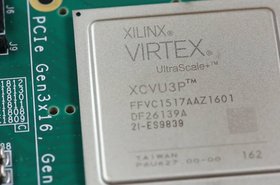Technology, and the data center landscape in particular, has seen a plethora of changes in previous years. Specifically, the rise of IoT and 5G has created a demand for immense processing capabilities and added pressure to servers like never before and, even further, quantum computing is shaping up to come online by the end of the decade which will force system designers to keep up with these demands as securely and efficiently as possible.
However, as the data center landscape becomes more crowded, cloud servers and Edge computing systems are becoming more popular. While these systems are a step in the right direction, they also require increased security and power efficiency.
In order to meet these needs, FPGAs have arisen as the tool of choice – they are secure, low-power, and also improve overall system performance.
FPGAs and cyber resiliency
Over the past few years, 83 percent of businesses have experienced firmware attacks, with some not even knowing that they’ve been targeted. It’s clear that, with the growth of cloud servers and Edge computing systems, it’s no longer a matter of if organizations will experience an attack, but a matter of when. Therefore, ensuring the tools you’re using are secure is paramount.
First and foremost, for a data center to be cyber resilient, it absolutely must have proactive measures in place to protect the data. Once those measures are in place, it’s a matter of detecting incoming attacks and recovering from them while still maintaining the center’s service level requirements.
FPGAs are a useful tool here as they provide Hardware Root of Trust (RoT) that utilizes Platform Firmware Resilience (PFR) to protect, detect, and recover in real time. Further, FPGAs don’t just detect if malware is present or if a system is under attack, they proactively monitor traffic and identify rogue situations in real time. If an attack on firmware is successful, flash devices on the FPGA can load a golden image of the authorized firmware, override the unauthorized version, and ensure recovery of the system.
Beyond these resilient capabilities already built in, FPGAs’ field upgradability allows system architects to deploy updates without the need for an all-new tape out, as well as any new security vulnerabilities found after a design is locked.
FPGAs and power efficiency
As the number of cloud and Edge computing servers grows, efficient power management must be prioritized not just to keep the cost of power in check, but also to drive sustainability for the future. In fact, server power consumption and cooling systems make up the greatest share of direct electricity usage in US data centers.
FPGAs are designed for power efficiency, serving as a strong foundation for system designers to help consume significantly less power compared to similar devices. This is due to the parallel processing capabilities of FPGAs – instead of relying on a power-intensive microcontroller or microprocessor, FPGAs can process multiple compute functions all at once (aka in parallel), thereby consolidating functions to do more with less power.
For instance, BMC functionality and other components can now be consolidated into FPGAs, giving them more functionality in the same low-power, small package. Additionally, FPGAs can be programmed with adaptive fan algorithms and predictive maintenance capabilities to ramp cooling fans up or down depending on their workloads so that the energy is efficiently used. Smart fan control could also monitor the lifespan of the fans themselves to keep track of when they need to be replaced before they go out completely and adjust power distribution if other fans need to pick up the slack. This help to reduce expected downtime in a data center environment
The benefits of FPGAs are not just important when it comes to driving sustainability, but are also valuable for the overall operation of data centers. In addition to the risk of malicious attacks, extreme weather events are a top cause of outages and disruptions. In fact, 45 percent of data centers in the US report that they’ve experienced an event that threatened their ability to operate. FPGAs allow system designers to take all threat vectors into consideration as they offer in these harsh environments with its inherent SEU (single event upset) resiliency, single-chip non-volatile crypto solutions, and wide operating temperature range from -40°C to 125°C for the development of next-generation data center solutions.
FPGAs and the future of data centers
Boosting cyber resilience and power efficiency are critical first steps for improving data centers. However, the overall operational performance is also critical, particularly as data centers are becoming more important than ever with the influx of processing needs.
FPGAs can also play a critical role here as they’re able to effectively offload workloads typically processed by the CPU – freeing it up to allocate its resources more efficiently and accelerate the centers’ processing capabilities.
It’s unlikely that technology's growth will slow down anytime soon – particularly as things like 5G and quantum computing become more mainstream – and, as such, it’s necessary that data centers are equipped to keep up with the changes.
The rise of cloud servers and Edge computing systems is massively helpful to processing but also requires increased security and power efficiency. Fortunately, FPGAs are the ideal tool to not only boost cyber resiliency but do so at lower power forms while helping to improve the overall system performance. FPGAs can bring about a new era for data centers – one with greater security, efficiency, sustainability, and capabilities.


